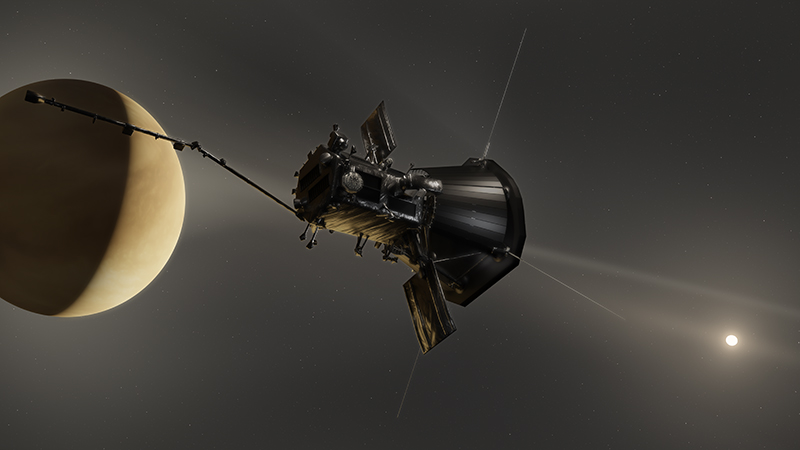This column first ran in The Tablet in March, 2019. (The image above is an artist’s rendition of the Parker Solar Probe, courtesy of Johns Hopkins Applied Physics Lab.)
The Sun’s magnetic field goes through an 11 year cycle. When it is most active, plasma pouring out of the Sun into the solar wind can strike the Earth’s magnetic field and set off a cascade of issues for us here below, ranging from glorious auroras to problems with radio, cell phone, and electrical power transmissions.
Since 2006, a pair of NASA satellites called “Stereo” have been orbiting the Sun, ahead and behind the Earth, monitoring this solar weather. Their cameras record the Sun’s corona, the thin crown of light around the Sun most memorable as that wonderful glow around the Moon during a total solar eclipse.
Dust as noise
But “space” is not completely empty. The dust orbiting between the Sun and us scatters more sunlight than the light from the corona itself. Thus scientists monitoring the Sun have developed a number of clever techniques to subtract away the light from the dust and make the corona more visible.
Meanwhile, the Parker Solar Probe launched in August 2018 is slowly wending its way ever closer to the Sun; by 2025 it should be traversing regions so close to the Sun that any dust there would be vaporized. Could one actually see such dust-free region in the Stereo images, and find out just how far from the Sun it extends — assuming it exists at all?

The trick is to look precisely at the dusty glow that previously had been thrown away as so much noise. Guillermo Stenborg and Russell Howard at the Naval Research Laboratory in Washington, D.C. decided to take a look into that data.
Dust as data
To their surprise, when they tried mapping out the dust’s scattered light they found that it was especially strong in a region that matches the orbit of the planet Mercury. It turns out that Mercury is orbiting within a ring of dust. In retrospect, that should not come as such a surprise. A similar ring of dust around Venus was seen in the data of an earlier sun-probing spacecraft, Helios, in 2006.
But where do these dust rings come from?
This dust, mind you, is extremely tenuous. Planets in orbit never notice it. But unlike a large planet or even an asteroid, a grain of dust is tiny enough that its path can be scattered by forces as small as the pressure of light hitting its surface, or the subtle interaction between static electricity on the dust and the passing magnetic field of the solar wind. (This latter effect is one that I studied in my PhD thesis, so long ago that virtually everything I had to say about it is now long obsolete.)
These tiny effects build up over time; they should be enough to completely dissipate any dust ring over the age of the solar system. Something must be renewing these rings.
Asteroids near the Sun?
Another new study, by Petr Pokorny and Marc Kuchner at the NASA Goddard Spaceflight Center, has tried to model how dust from comets or the asteroid belt might be trapped by Venus’ gravity into a ring. None of their models fit the data. Instead, they postulate that there’s a new population of asteroids near the orbit of Venus. No one has seen any such asteroids yet; but they would be difficult to detect, orbiting so close to the Sun.
Both results have come from looking for information where we once thought there was only noise. The data rejected by the builders of solar weather monitors has become the cornerstone of these new discoveries.

